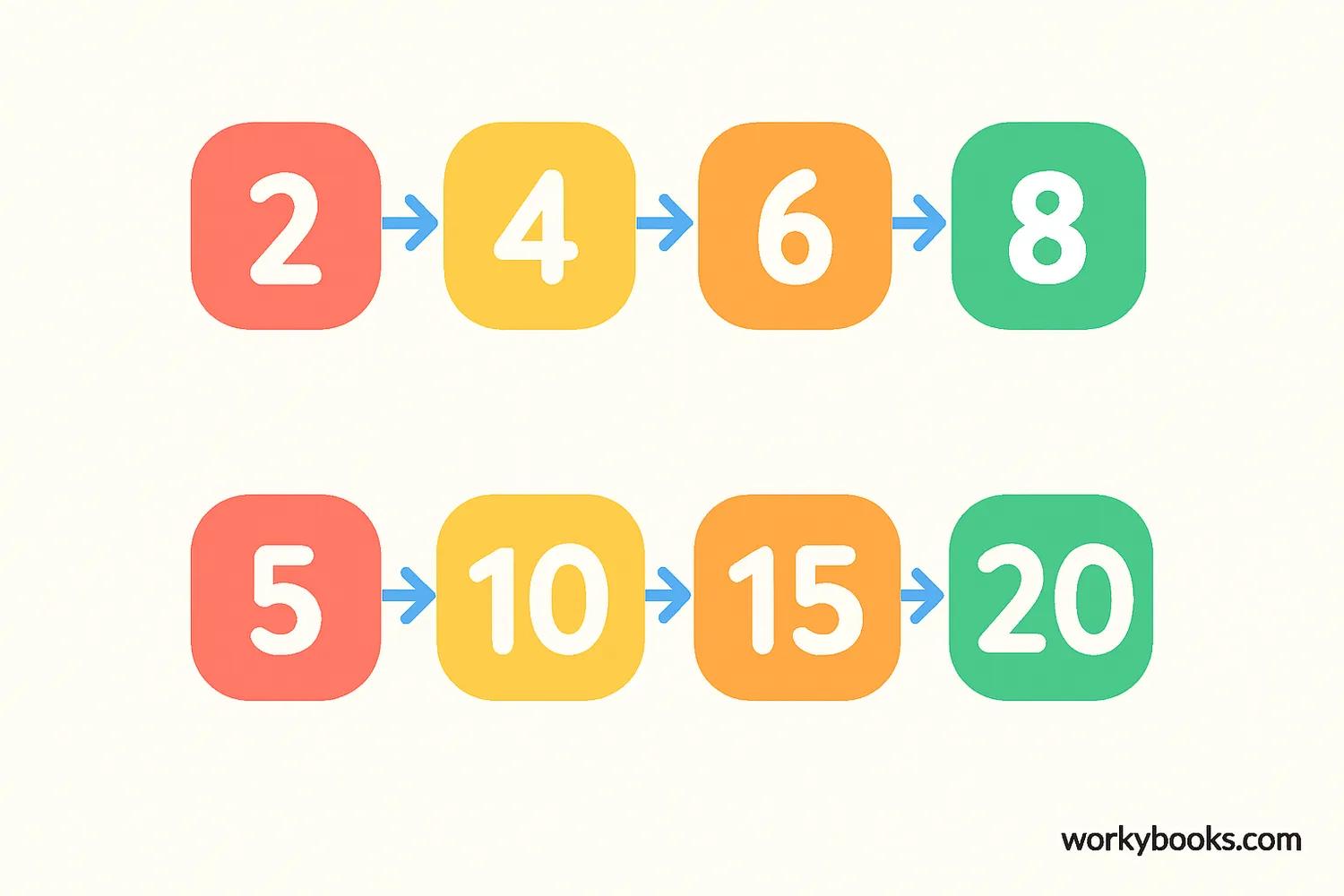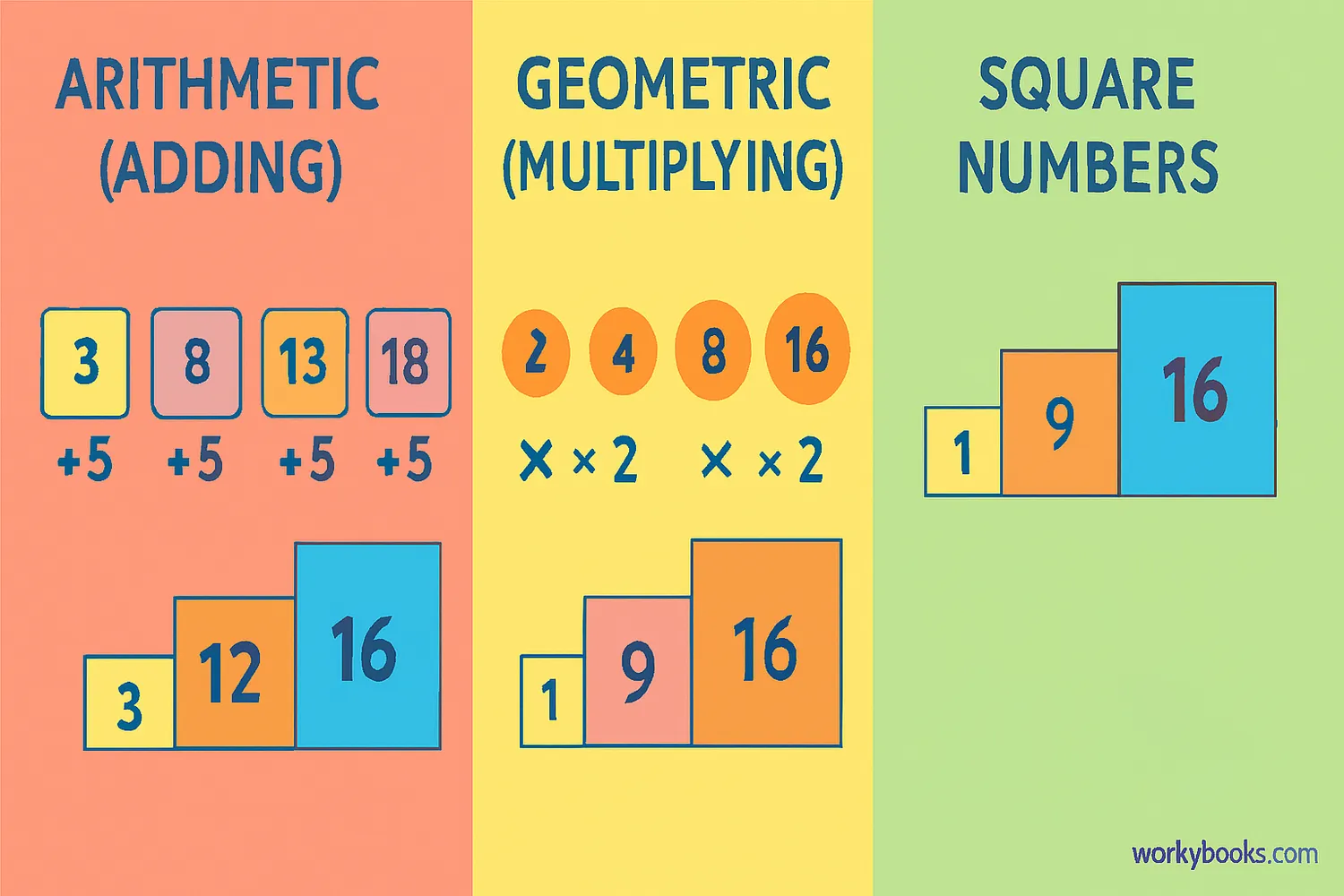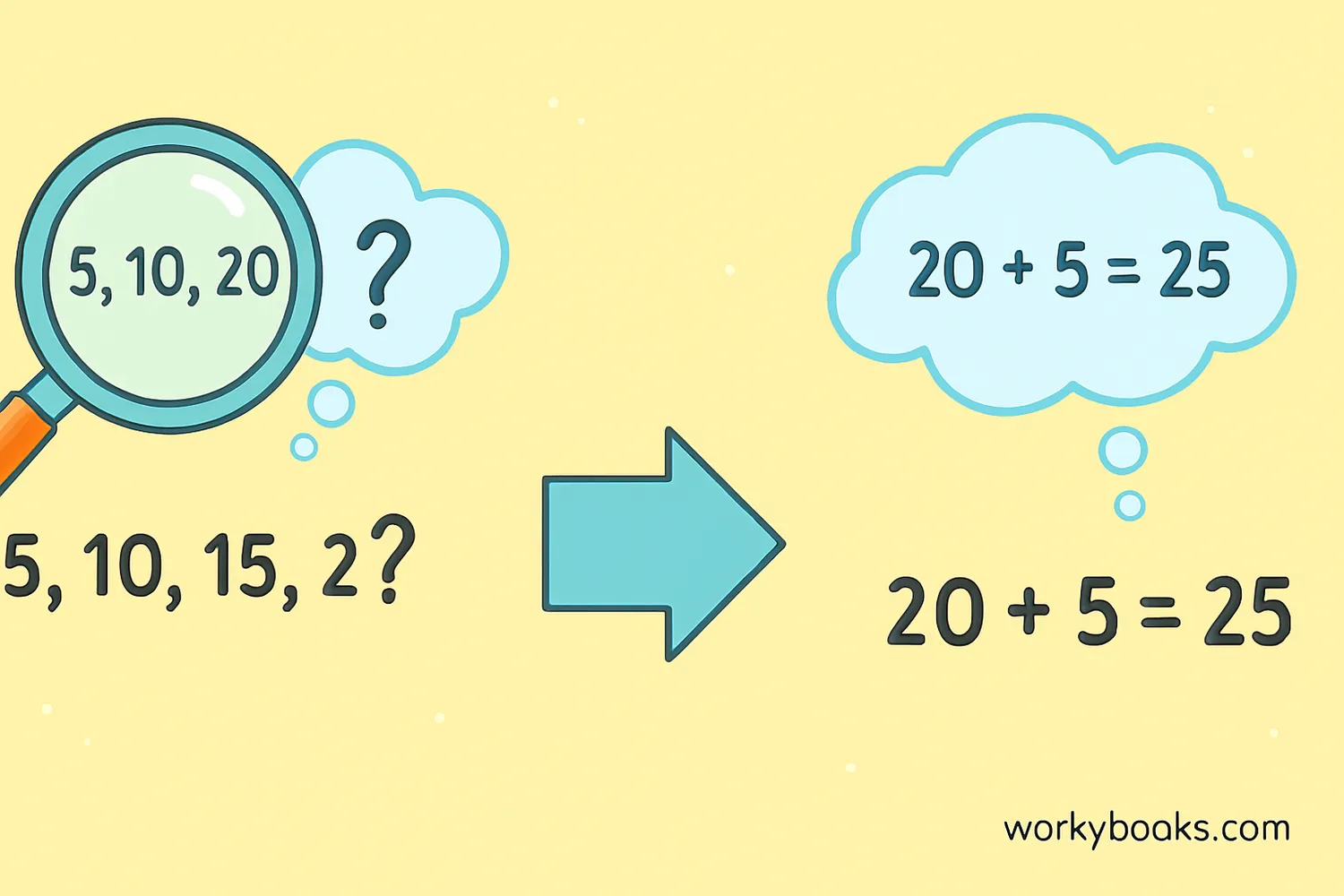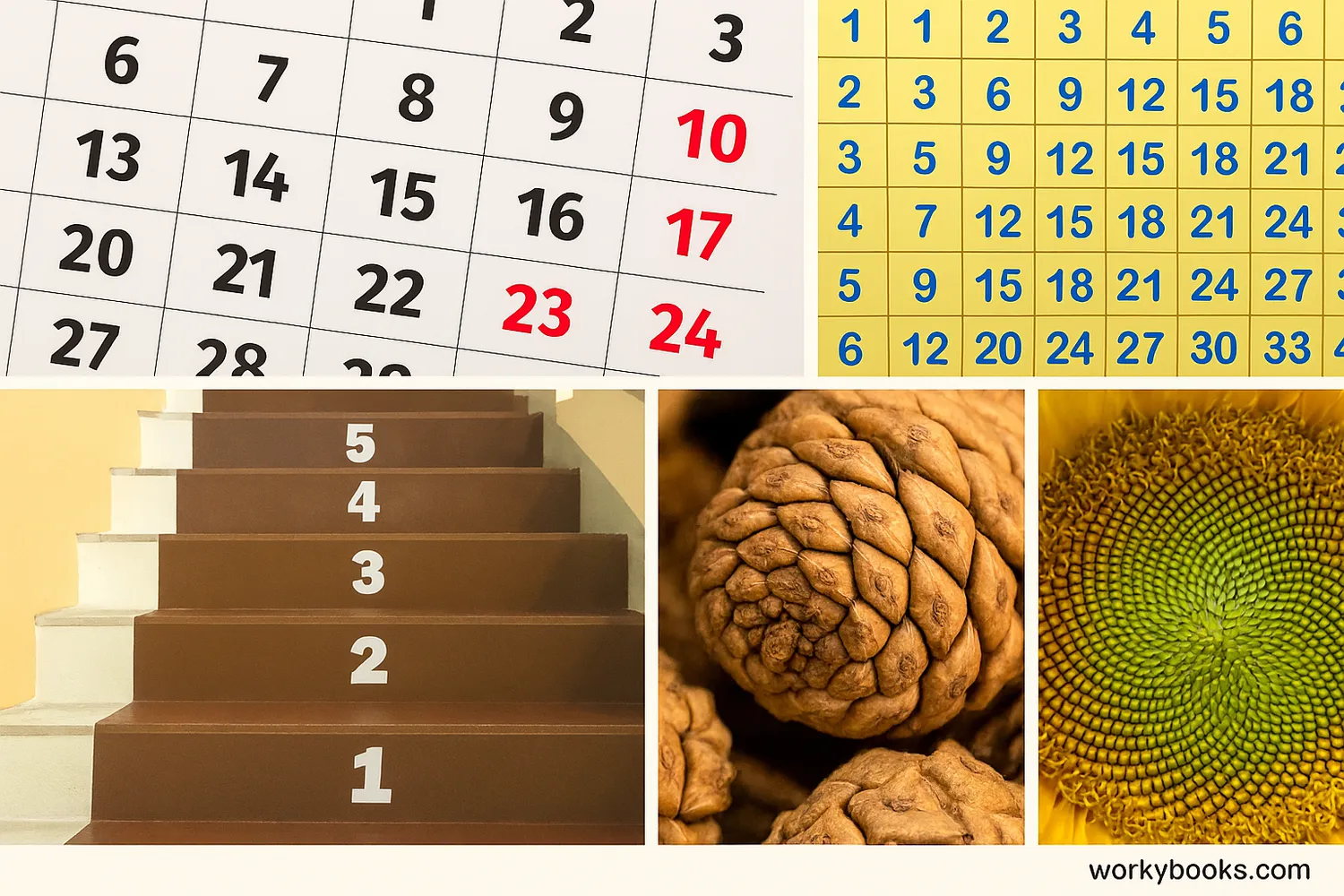Number Patterns - Definition, Examples, Quiz, FAQ, Trivia
Understanding Number Sequences and Mathematical Patterns
What Are Number Patterns?

Number patterns are sequences of numbers that follow a specific rule or set of rules. Think of them as a special code that numbers follow!
When numbers are arranged in a sequence with a consistent rule, we can predict what numbers come next. Patterns help us understand how numbers relate to each other and make math more predictable and understandable.
Math Fact!
Patterns are everywhere in mathematics! They help us solve problems faster and understand how numbers work together.
Types of Number Patterns

There are several different types of number patterns. Each follows its own special rule:
Arithmetic Patterns
Numbers change by adding or subtracting the same value each time
Geometric Patterns
Numbers change by multiplying or dividing by the same value
Square Numbers
Numbers created by multiplying a number by itself
Triangular Numbers
Numbers that can form equilateral triangles
Some patterns are even more special, like the Fibonacci sequence, where each number is the sum of the two previous numbers: 1, 1, 2, 3, 5, 8, 13...
How to Find Number Patterns

Finding patterns is like being a number detective! Here's how you can discover the pattern rule:
Look at the Sequence
Write down the numbers in order and look at how they change
Find the Difference
Subtract each number from the one that comes after it
Check for Multiplication
Divide each number by the one before it to see if there's a pattern
Look for Special Patterns
Check if the numbers are squares, triangles, or another special sequence
Test Your Rule
Apply your rule to predict the next number and see if it makes sense
Remember, sometimes patterns can have more than one rule. The important thing is to find a rule that works for all the numbers in the sequence!
Examples of Number Patterns

Number patterns appear everywhere in math and in our daily lives. Here are some common examples:
Counting by 2s
2, 4, 6, 8, 10, 12... (adding 2 each time)
Counting by 5s
5, 10, 15, 20, 25, 30... (adding 5 each time)
Multiplication Table
3, 6, 9, 12, 15... (the 3 times table)
Square Numbers
1, 4, 9, 16, 25, 36... (1×1, 2×2, 3×3...)
Fibonacci Sequence
1, 1, 2, 3, 5, 8, 13... (each number is the sum of the two before it)
Patterns also appear in real-world situations like the days on a calendar, steps on a staircase, or even the arrangement of seeds in a sunflower!
Did You Know?
The Fibonacci sequence appears often in nature, like in the number of petals on flowers or the arrangement of leaves on a stem!
Number Patterns Quiz
Test your knowledge with this quiz! Answer all 5 questions to see how much you've learned about number patterns.
Frequently Asked Questions
Here are answers to some common questions about number patterns:
Math Facts About Number Patterns
Discover some fascinating facts about number patterns and mathematics!
Fibonacci in Nature
The Fibonacci sequence appears often in nature! Many flowers have 3, 5, 8, 13, or 21 petals - all Fibonacci numbers. Sunflower seeds grow in spirals that follow Fibonacci numbers too!
Prime Numbers
Prime numbers (numbers divisible only by 1 and themselves) don't follow a simple pattern. Mathematicians have been studying them for thousands of years, and they're still discovering new things about prime number patterns!
Pascal's Triangle
Pascal's Triangle is a special number pattern where each number is the sum of the two numbers above it. It contains many patterns within it, including triangular numbers and Fibonacci numbers!
Ancient Pattern Lovers
Ancient mathematicians from Greece, India, and China all studied number patterns thousands of years ago. The Fibonacci sequence was actually described by Indian mathematicians centuries before Fibonacci!





